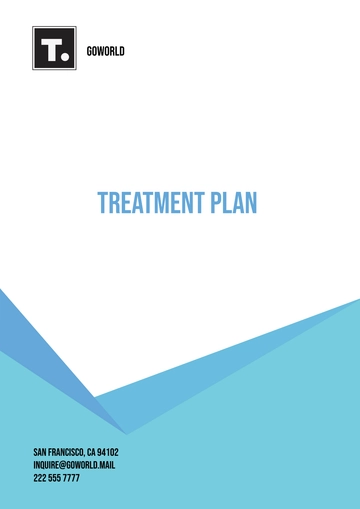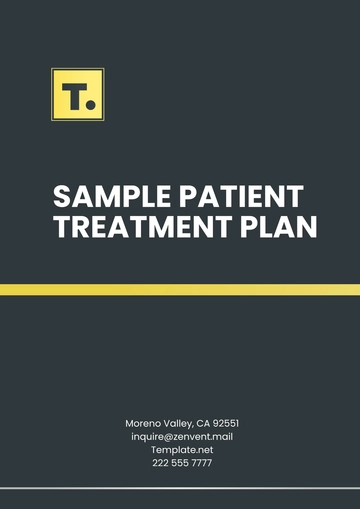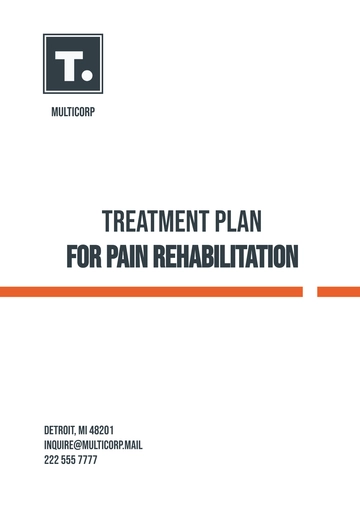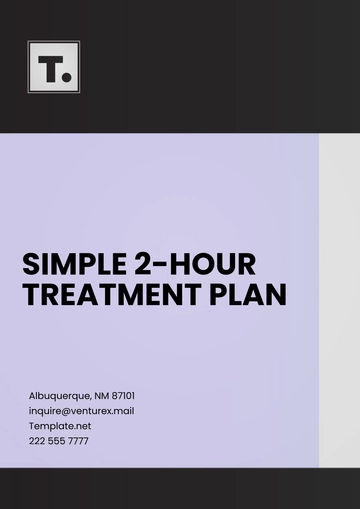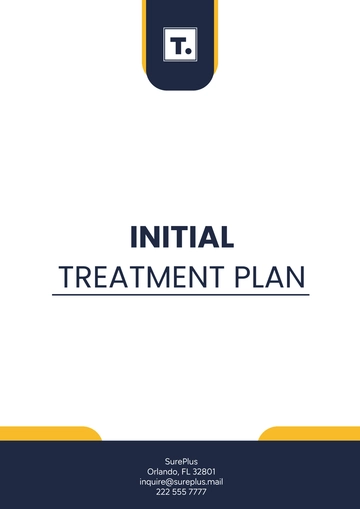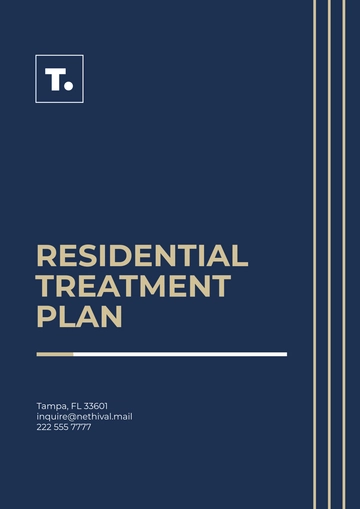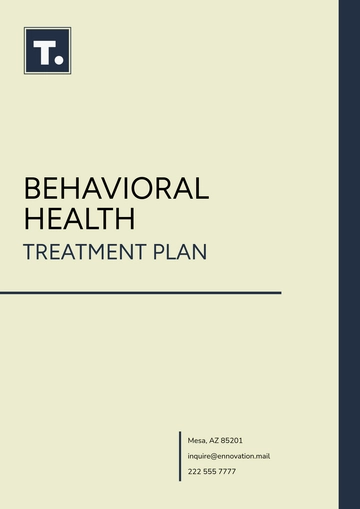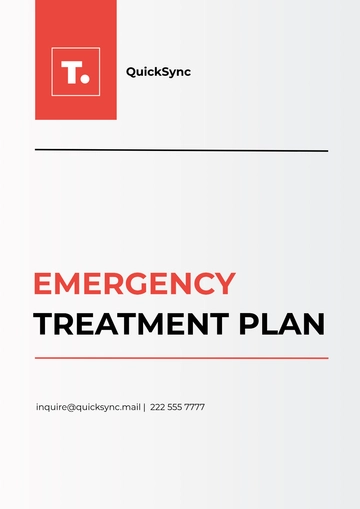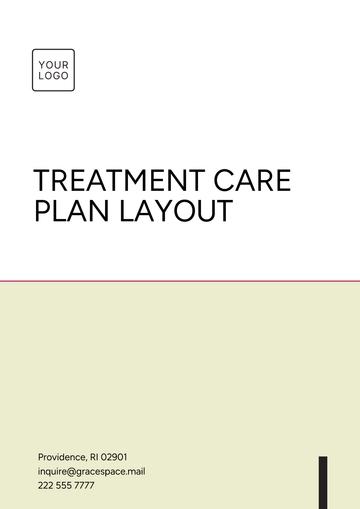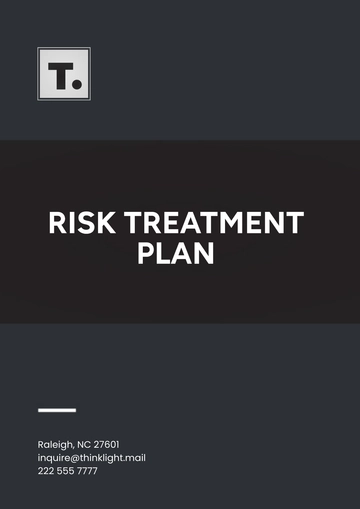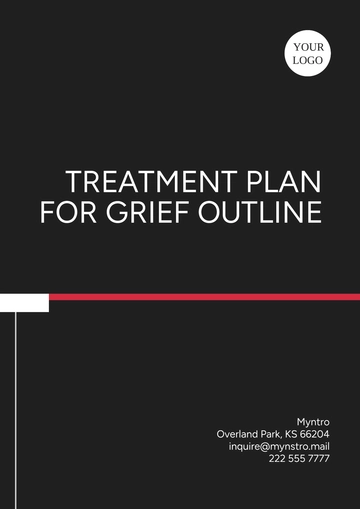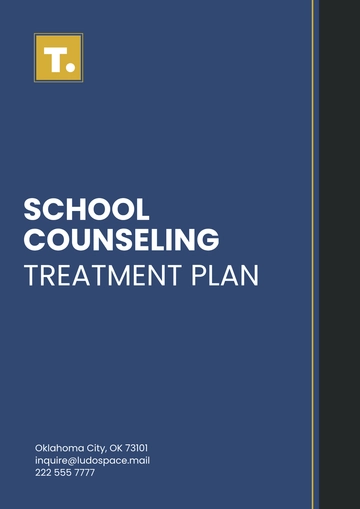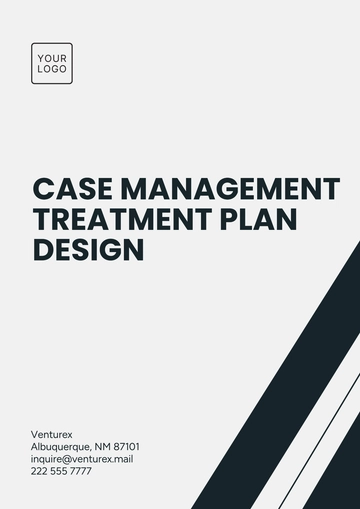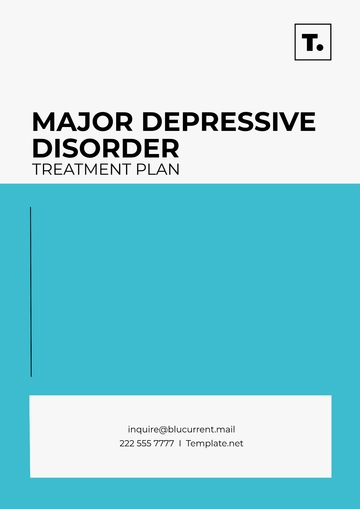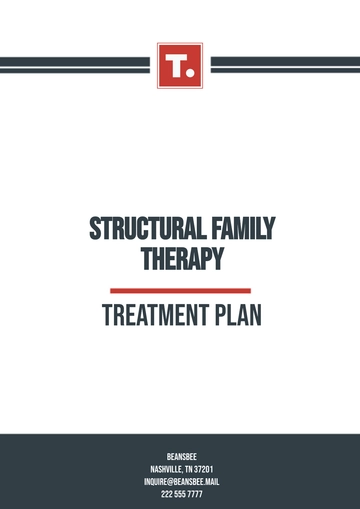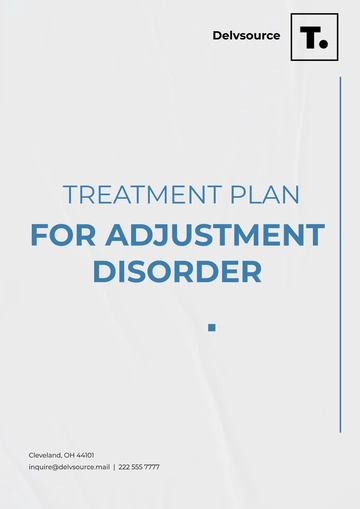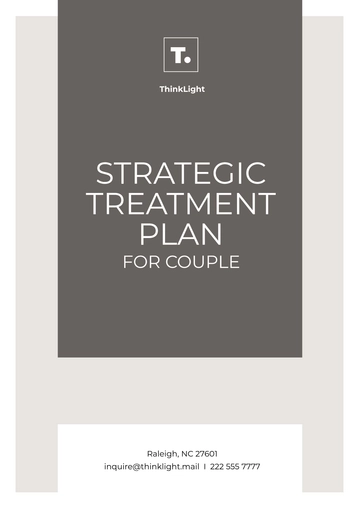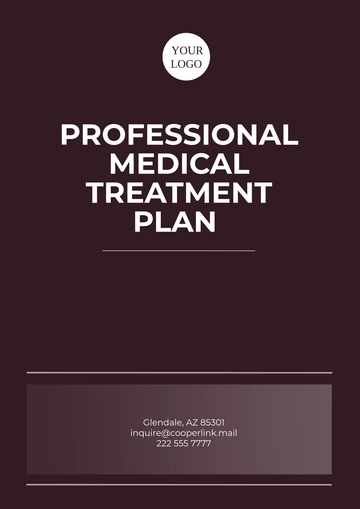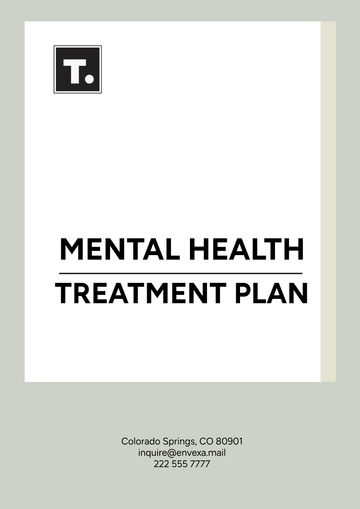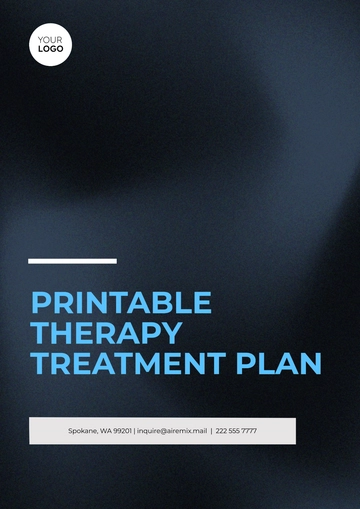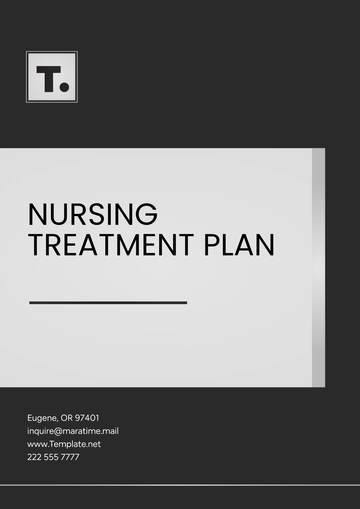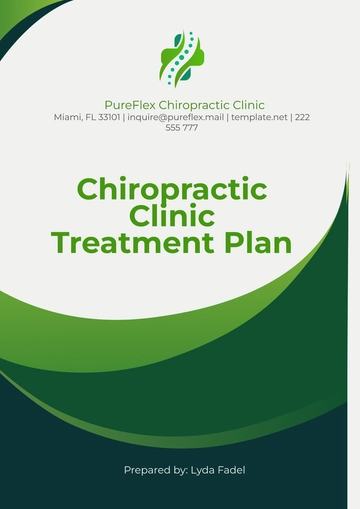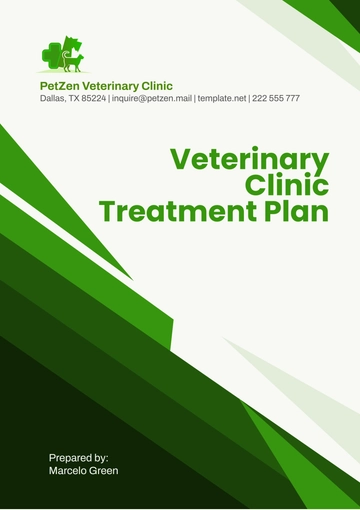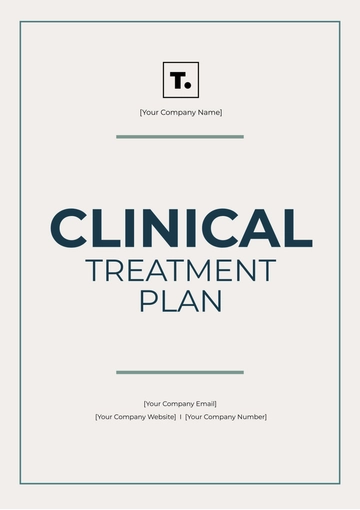Free Massage Therapy Treatment Plan
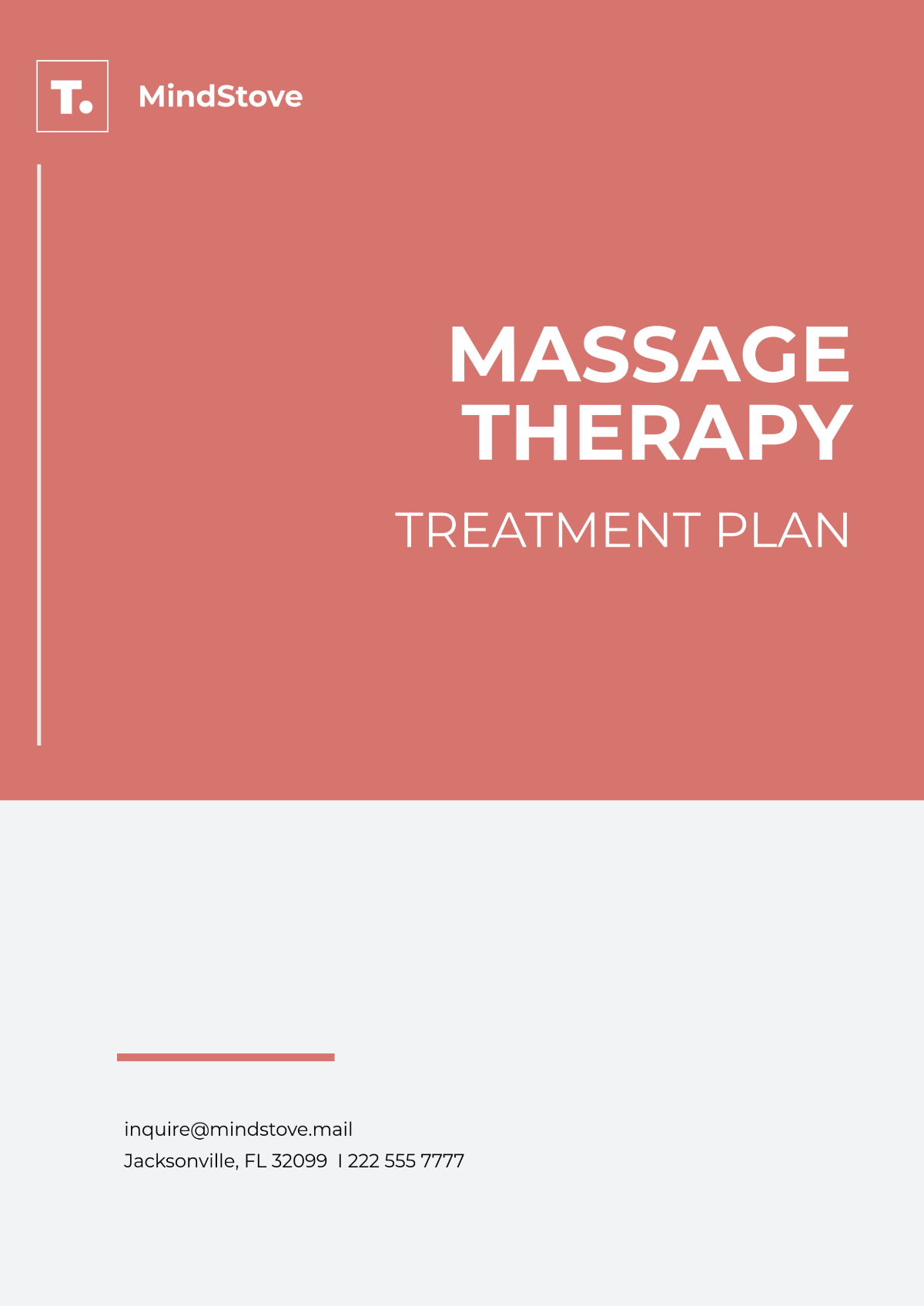
Prepared by: [Your Name]
1. Introduction
Massage therapy offers a multitude of benefits for both physical and mental well-being. From reducing muscular tension and promoting relaxation to improving circulation and enhancing overall quality of life, massage therapy plays a crucial role in holistic health care. This treatment plan outlines the process of assessment, treatment, and aftercare to ensure a comprehensive and effective massage therapy experience for the client.
2. Treatment Plan Objectives
Muscular Tension Relief: Alleviate muscular tension and tightness in specific areas identified during assessment, enhancing overall relaxation and comfort.
Stress Reduction: Promote relaxation and reduce stress levels through the application of soothing massage techniques, fostering a sense of calm and well-being.
Improved Circulation: Enhance blood circulation and lymphatic drainage to facilitate the removal of metabolic waste products and toxins from the body, promoting overall health and vitality.
Pain Management: Address areas of discomfort or pain through targeted deep tissue work and trigger point therapy, providing relief and improving functional mobility.
Postural Alignment: Assist in correcting postural imbalances identified during assessment, promoting proper alignment, and reducing strain on muscles and joints.
3. Assessment and Evaluation
In the initial phase, the therapist conducts a thorough assessment to gather pertinent information and evaluate the client's condition:
A comprehensive intake form is provided to collect details about the client's medical history, current health status, and specific concerns regarding the massage session.
Postural assessment is performed to identify any areas of tension, misalignment, or postural deviations.
Range of motion testing is conducted to assess flexibility, mobility, and joint function.
Palpation techniques are employed to locate areas of muscle tension, trigger points, and tender areas.
A client interview is conducted to discuss treatment goals, preferences, and any additional information relevant to the session.
4. Treatment Plan
A tailored treatment plan is formulated based on the assessment findings and client's individual needs:
Goal | The primary goal of the session is to alleviate muscular tension, promote relaxation, and enhance overall well-being. |
|---|---|
Treatment Techniques | Recommended techniques include a combination of Swedish massage for relaxation and circulation, along with targeted deep tissue work to address specific areas of tension or discomfort. |
Duration and Frequency | The session duration is typically 60 minutes. For optimal results, scheduling regular sessions every two weeks is advised to maintain progress and address any ongoing concerns. |
Treatment Plan Documentation | All treatment details, including techniques utilized and areas of focus, are documented to ensure effective treatment and continuity of care. |
5. Massage Session
During the massage session, the therapist creates a conducive environment and applies appropriate techniques:
Environment | Suitable lighting, temperature, and soothing ambiance to promote relaxation and comfort. |
|---|---|
Client Positioning | The client is positioned comfortably on the massage table, with supportive pillows or bolsters provided to ensure proper alignment and relaxation throughout the session. |
Technique Application | Techniques are applied systematically, starting with gentle strokes to warm up the muscles and progressing to deeper pressure as needed to address areas of tension and promote relaxation. |
Communication | Open communication is encouraged throughout the session to ensure client comfort and satisfaction. Clients are encouraged to provide feedback on pressure, discomfort, or any areas requiring additional attention. |
Posture Education | Throughout the session, clients are provided with education on maintaining good posture and ergonomic practices to support long-term musculoskeletal health and prevent future issues. |
6. Aftercare Recommendations
Hydration: Drinking water helps to flush out toxins released during the massage and rehydrate muscles.
Self-Care Techniques: Incorporating gentle stretching exercises and using heat therapy can help to prolong the effects of the massage and alleviate residual tension.
Rest and Relaxation: Allowing time for rest and relaxation post-session aids in integrating the benefits of massage therapy and promotes overall well-being.
Healthy Lifestyle Habits: Maintaining a balanced diet, regular exercise routine, and stress-management practices contribute to overall health and complement the benefits of massage therapy.
Regular Bodywork: Scheduling regular massage sessions supports ongoing maintenance of muscular health, reduces tension buildup, and enhances overall physical and mental well-being.
Mindfulness Practices: Incorporating mindfulness meditation or deep breathing exercises can further promote relaxation, stress reduction, and emotional balance.
- 100% Customizable, free editor
- Access 1 Million+ Templates, photo’s & graphics
- Download or share as a template
- Click and replace photos, graphics, text, backgrounds
- Resize, crop, AI write & more
- Access advanced editor
Enhance your massage therapy practice with the Massage Therapy Treatment Plan Template by Template.net. This customizable and downloadable template provides a structured approach to developing individualized treatment plans. Easily editable in our AI Editor Tool, it allows you to tailor each session to client-specific needs. Print your personalized plans to deliver a professional, consistent, and effective massage therapy experience every time.
You may also like
- Finance Plan
- Construction Plan
- Sales Plan
- Development Plan
- Career Plan
- Budget Plan
- HR Plan
- Education Plan
- Transition Plan
- Work Plan
- Training Plan
- Communication Plan
- Operation Plan
- Health And Safety Plan
- Strategy Plan
- Professional Development Plan
- Advertising Plan
- Risk Management Plan
- Restaurant Plan
- School Plan
- Nursing Home Patient Care Plan
- Nursing Care Plan
- Plan Event
- Startup Plan
- Social Media Plan
- Staffing Plan
- Annual Plan
- Content Plan
- Payment Plan
- Implementation Plan
- Hotel Plan
- Workout Plan
- Accounting Plan
- Campaign Plan
- Essay Plan
- 30 60 90 Day Plan
- Research Plan
- Recruitment Plan
- 90 Day Plan
- Quarterly Plan
- Emergency Plan
- 5 Year Plan
- Gym Plan
- Personal Plan
- IT and Software Plan
- Treatment Plan
- Real Estate Plan
- Law Firm Plan
- Healthcare Plan
- Improvement Plan
- Media Plan
- 5 Year Business Plan
- Learning Plan
- Marketing Campaign Plan
- Travel Agency Plan
- Cleaning Services Plan
- Interior Design Plan
- Performance Plan
- PR Plan
- Birth Plan
- Life Plan
- SEO Plan
- Disaster Recovery Plan
- Continuity Plan
- Launch Plan
- Legal Plan
- Behavior Plan
- Performance Improvement Plan
- Salon Plan
- Security Plan
- Security Management Plan
- Employee Development Plan
- Quality Plan
- Service Improvement Plan
- Growth Plan
- Incident Response Plan
- Basketball Plan
- Emergency Action Plan
- Product Launch Plan
- Spa Plan
- Employee Training Plan
- Data Analysis Plan
- Employee Action Plan
- Territory Plan
- Audit Plan
- Classroom Plan
- Activity Plan
- Parenting Plan
- Care Plan
- Project Execution Plan
- Exercise Plan
- Internship Plan
- Software Development Plan
- Continuous Improvement Plan
- Leave Plan
- 90 Day Sales Plan
- Advertising Agency Plan
- Employee Transition Plan
- Smart Action Plan
- Workplace Safety Plan
- Behavior Change Plan
- Contingency Plan
- Continuity of Operations Plan
- Health Plan
- Quality Control Plan
- Self Plan
- Sports Development Plan
- Change Management Plan
- Ecommerce Plan
- Personal Financial Plan
- Process Improvement Plan
- 30-60-90 Day Sales Plan
- Crisis Management Plan
- Engagement Plan
- Execution Plan
- Pandemic Plan
- Quality Assurance Plan
- Service Continuity Plan
- Agile Project Plan
- Fundraising Plan
- Job Transition Plan
- Asset Maintenance Plan
- Maintenance Plan
- Software Test Plan
- Staff Training and Development Plan
- 3 Year Plan
- Brand Activation Plan
- Release Plan
- Resource Plan
- Risk Mitigation Plan
- Teacher Plan
- 30 60 90 Day Plan for New Manager
- Food Safety Plan
- Food Truck Plan
- Hiring Plan
- Quality Management Plan
- Wellness Plan
- Behavior Intervention Plan
- Bonus Plan
- Investment Plan
- Maternity Leave Plan
- Pandemic Response Plan
- Succession Planning
- Coaching Plan
- Configuration Management Plan
- Remote Work Plan
- Self Care Plan
- Teaching Plan
- 100-Day Plan
- HACCP Plan
- Student Plan
- Sustainability Plan
- 30 60 90 Day Plan for Interview
- Access Plan
- Site Specific Safety Plan
